Art Reflection for Primary Grades Low Reading Art Reflection
ten Unique and Creative Reflection Techniques & Lessons for the Secondary Pupil
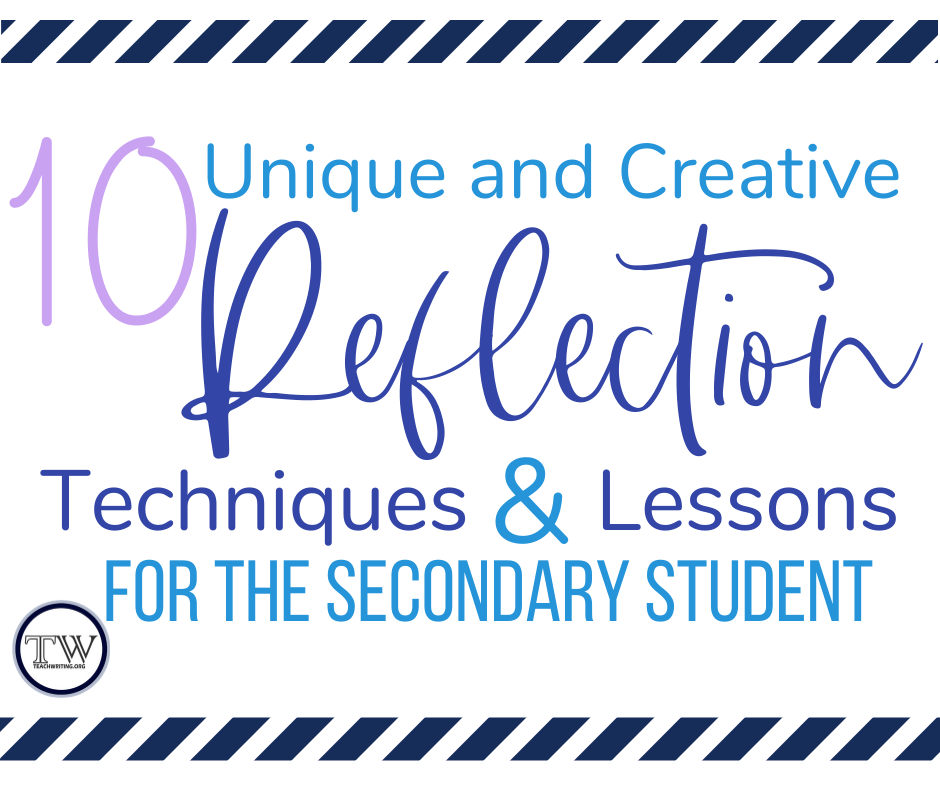
Every bit educators, we know how critical reflection is to the learning process. Getting students to reflect- deeply and meaningfully- is often 1 of the most challenging lessons nosotros teach. I have institute that both my middle school and high school students will often scoff at these reflection activities, providing the least amount of effort possible to complete the chore they see as meaningless. I take been searching for and creating lessons and activities that will bring interest and engagement to this chore. The following is a listing of 10 lessons and activities I use regularly in my classroom to create a class of cogitating learners.

1. Growth Mindset and Goal Setting
The first pace in developing a truly reflective learner is to develop the growth mindset inside each and every student. Students practise not naturally believe that reading and writing are skills that can be improved upon. Nosotros take all heard our students comment that they "just are not good at writing." With this mindset, students are willing to accept poor scores, give less effort, and fain whatsoever reflection action given. As we know, this mindset takes fourth dimension to alter. I focus on these skills at the beginning of the twelvemonth, just this concept tin can be taught at whatever time!
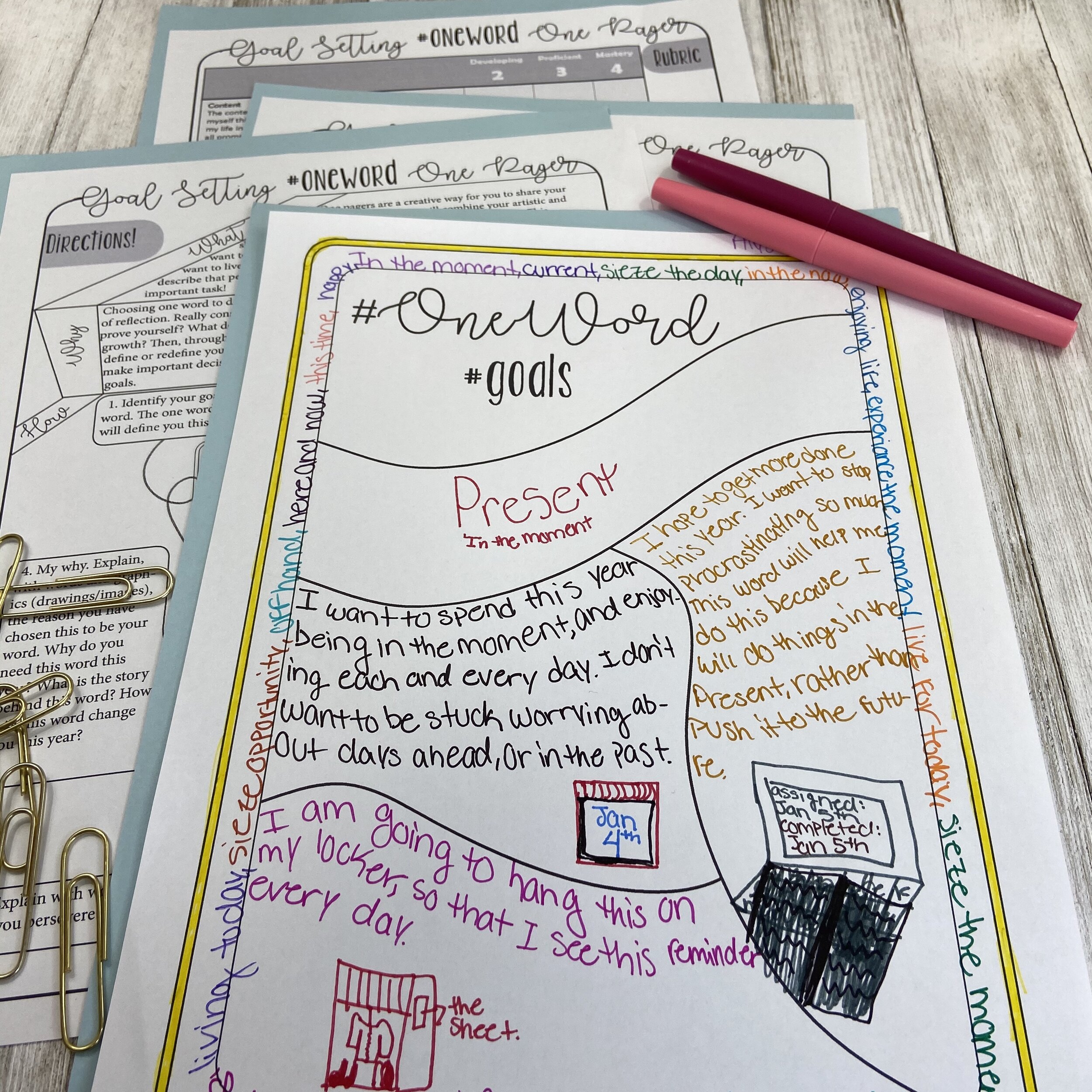
I dear request my students to create goals. We practise this at the beginning of the year, the start of a new semester, a new unit, a new skill, etc. This is a great identify to naturally build in those reflection conversations. Every bit we shut out that unit or semester, nosotros tin look back on these to reflect on our learning and fix new goals. What a nifty life skill and habit to develop with our students! I use these engaging goal setting one pager activities to help my students craft these goals. They are guided and specific, but my students get a chance to be creative and take a little fun in the process! Click here to learn more than about these goal setting i pagers!
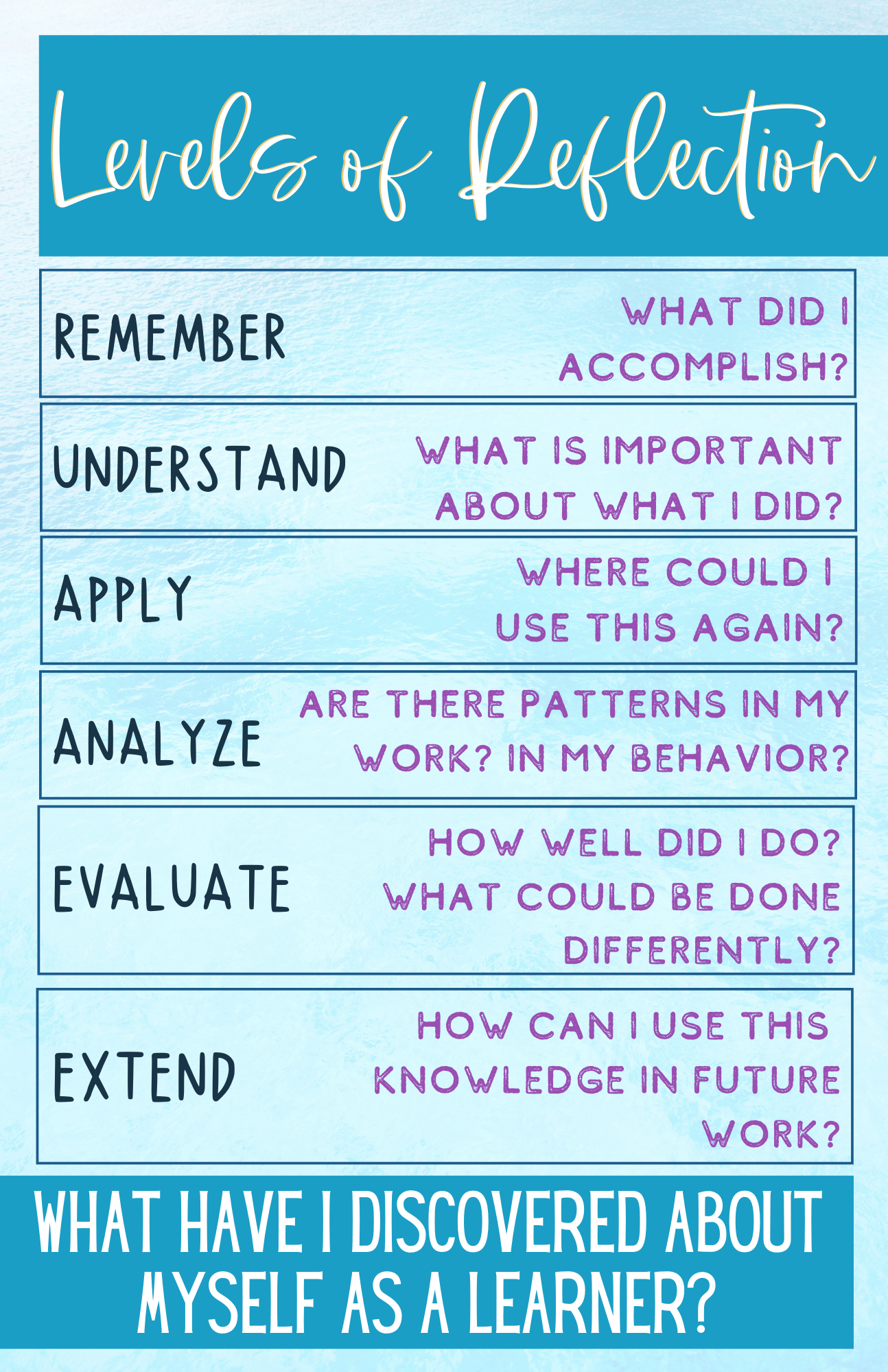
Click hither to download your ain copy for gratuitous!
2. Request students to reverberate on a deeper level.
The get-go few times I asked students to reflect on their thinking, I received reflections that were basic at all-time. I have created this affiche to encourage my students to reflect at a deeper level. Similar to Blooms Taxonomy, the lower the question- the deeper the thought. I keep this posted in my room, and use this equally a guide for open reflections on activities, daily work, or projects.
3. Model your own reflection.
I take the opportunity to model my learning and my reflecting whenever possible. After an activeness or lesson, I volition model my own reflection for students. I will also let students see when I make a mistake, and then I can express what I have learned from this. I reflect on these in the aforementioned fashion I would wish my students to do after their own mistakes/learning opportunity!

4. Reflect 'n' Sketch.
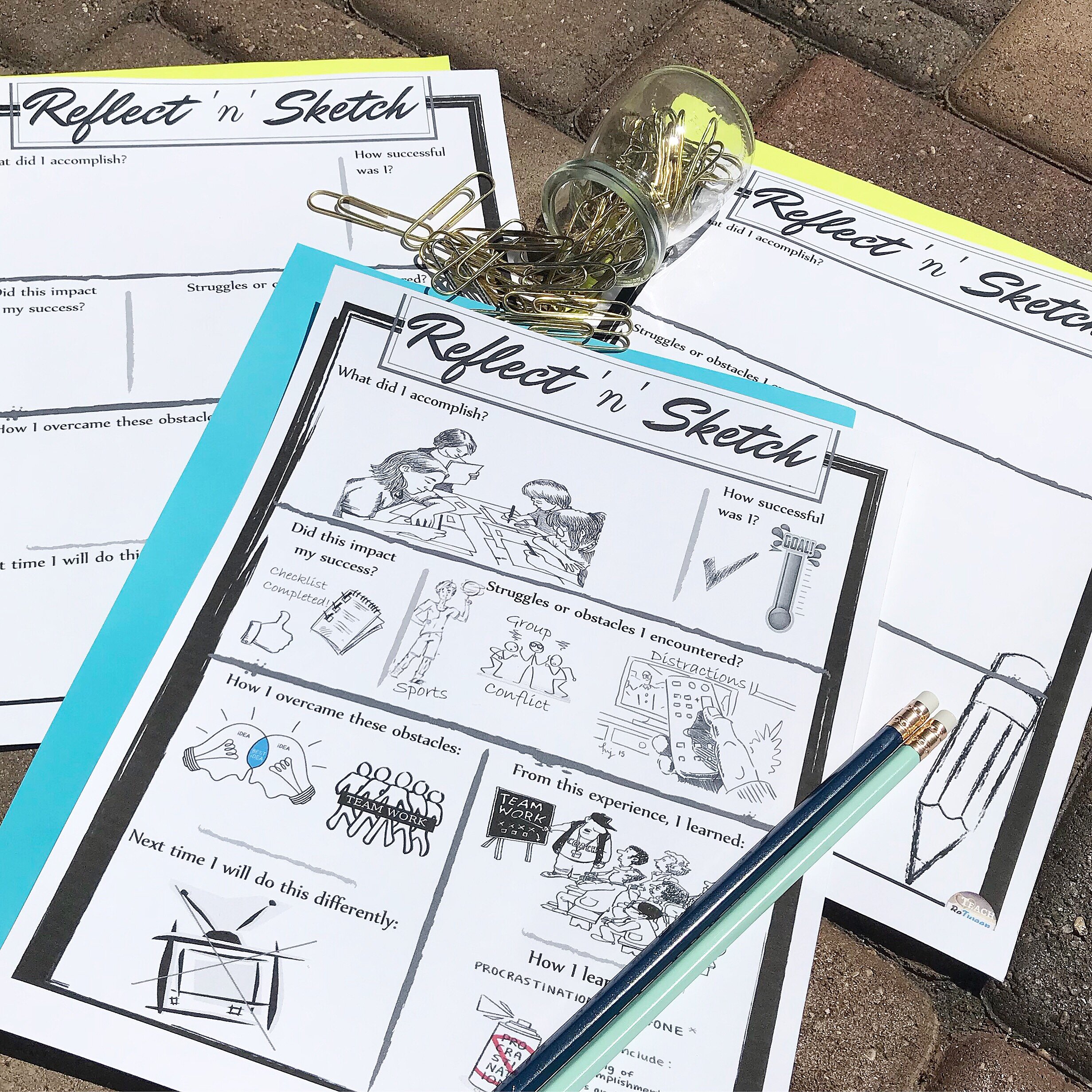
Click here for more data!
Ane of my favorite reflection lessons is the Reflect 'n' Sketch activeness. When I began teaching, I just saw my students equally readers and writers. I could run across their struggles and successes within my subject alone. Then, later on teaching tone and mood to a grouping of 8th graders, I asked students to describe a picture of the mood of a poem. Through this activity, I saw my struggling readers excel with beautiful artwork. I realized that my bailiwick, English, is not the only skill to exist had. Many of my students excelled in other areas, especially those who struggled in my class. This experience inspired my Reverberate 'n' Sketch activity. This gives students the option to draw their reflections on a project or activeness. Guiding questions guide their artwork, and students can still deliver deep reflections with a medium that inspires them.
5. Reflection Vlog
I tried this for the offset fourth dimension this past fall, and my students admittedly rave about the Reflection Vlog. I gave students the guiding questions found inside the Reverberate 'n' Sketch activity, and asked them to create a personal Vlog. Later each major project or cess, I asked students to add to their Vlog. Some students chose to upload their videos to YouTube, and others preferred the privacy of merely creating an iMovie or Windows Moviemaker video. With this medium of reflection, students were complimentary to speak about their work, display their work, or add videos and pictures of the process of creating their work. Non just did students find this engaging, simply they found that they were able speak freely almost their learning. They have commented that they did non feel bound past words, grammar, structure, and organization within the reflection, so they felt that they were meliorate able to express their truest feelings. I can attest to this as I watched their Vlog videos. They opened upwards more through this 'on camera' feel, than in whatever other reflection technique!
6. Clarify your work from the instructor's perspective.
When introducing a writing assignment, I would oft provide exemplars, or mentor texts, and ask students to assess these using the rubric that would assess their own piece of work. Not only did students meliorate understand the rubric, they improve understood the expectations for the writing. This inspired me to have students assess their own work in a similar way. I ask students to assess their ain piece of work from my perspective. This can be via rubric or by simply providing feedback that they believe I would give. Once students get to know me, this feedback can be eerily correct! This helps students to see their piece of work from a new perspective, and oft will encourage students to brand revisions before they submit their final work!
7. Scrapbook
I have asked my students to create a scrapbook reflection on larger projects; this is especially constructive for grouping work. Students take pictures of the process of their work, students working in their group roles, and of their final projection. Each group member tin showcase their own pictures or drawings of the groups work. Then students tin can reverberate on their roles within the group, the process of collaboration, their touch on on the groups success/failures, and on the learning that was derived from the projection's completion. Some students get very creative with this process, and truly enjoy this every bit much (or more) than the project itself!
8. The Cube of Reflection
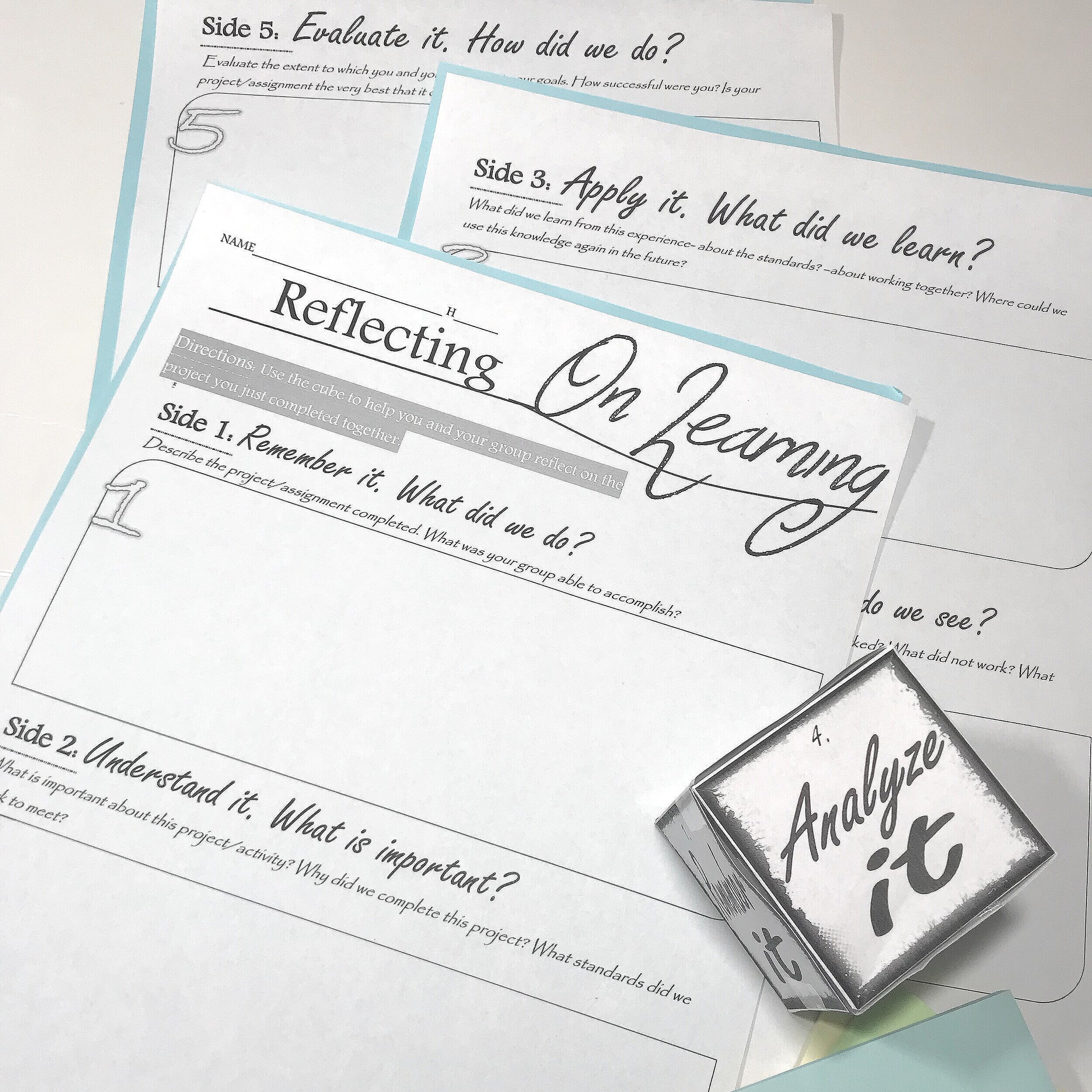
Click here for more than information!
I have apply this Cube of Reflection afterward a grouping project. Students have a tangible cube that they scroll to help them reflect together. The cube really helps them to recall nearly their collective learning; they will use the reflection taxonomy to build their reflection to the deepest levels. Guiding questions assist students with each level of this taxonomy. The fun cube fosters a commonage reflection experience!
Students will:
-Call up information technology.
-Understand it.
-Apply it.
-Analyze it.
-Evaluate it.
-Create it.
ix. Social Media
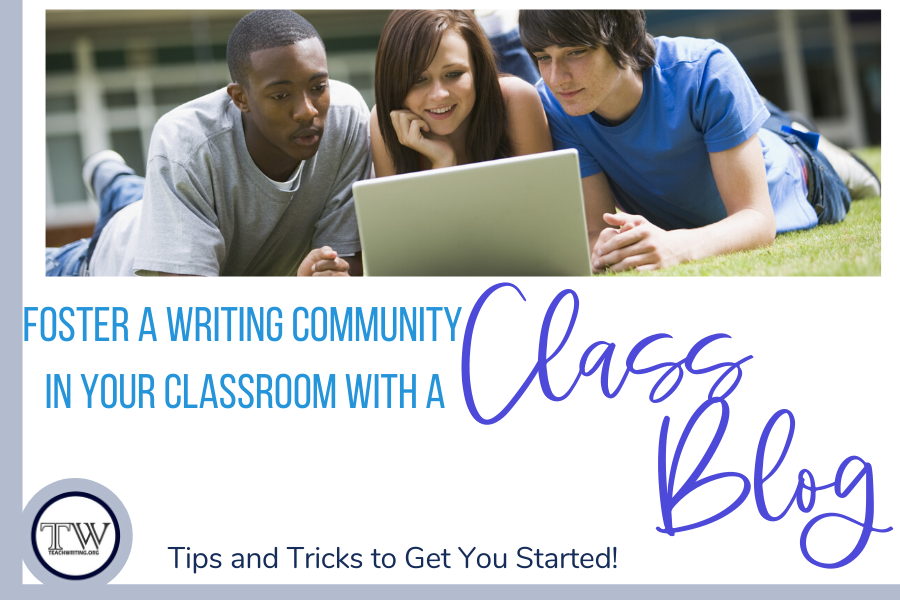
I have created a Google site to mimic Facebook. Students can upload a picture of their project and reflect on their process or learning feel. I can also pose reflection questions and have students respond to these through this "Fake Facebook". This can be every bit effective on a class web log likewise. For more details near setting upward a class web log, cheque out this article on the left!
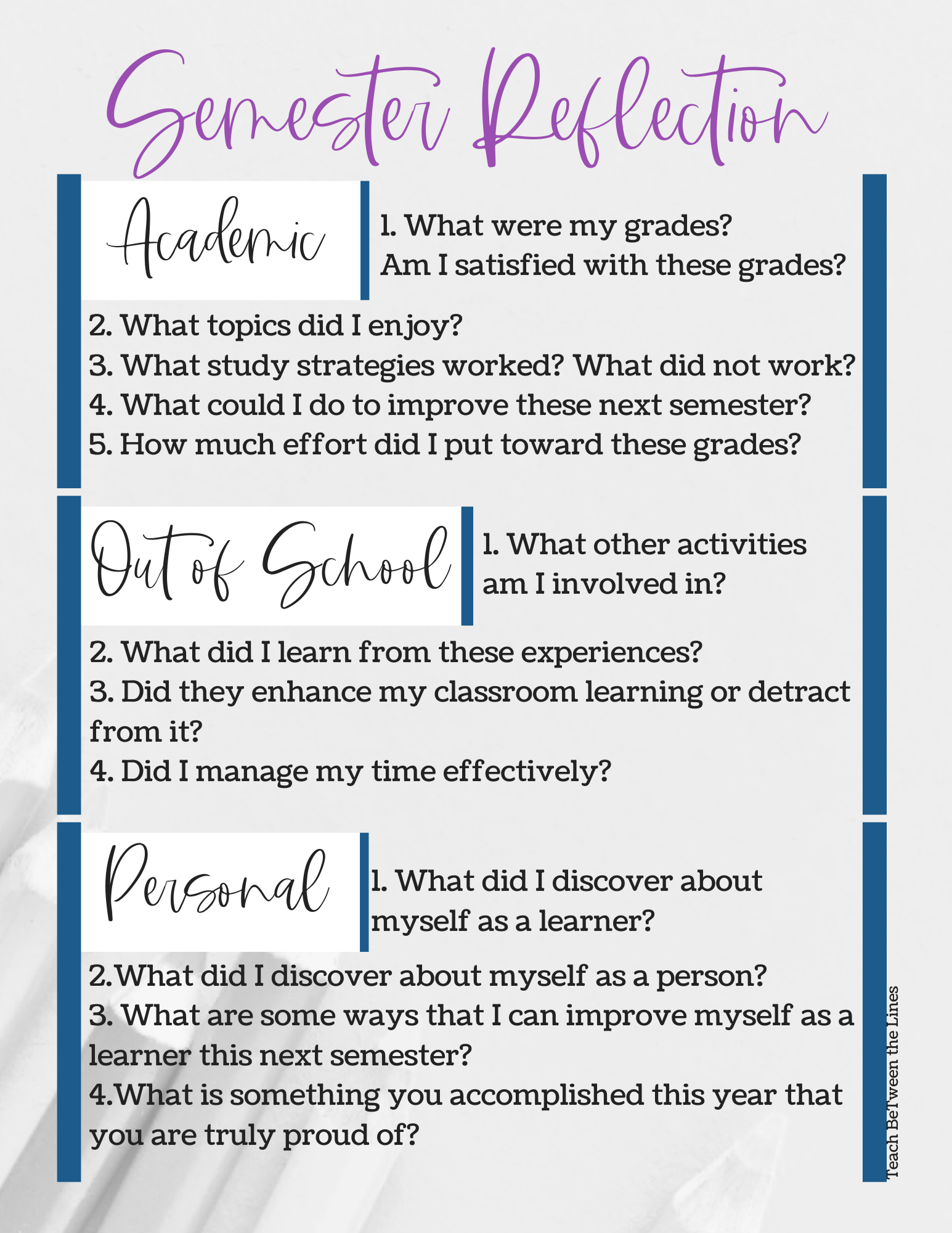
Click on the image to catch this free resources!
10. Semester Reflection
I e'er endeavor to do a deeper reflection at the semester break. For most of my classes, I will retain the aforementioned fix of students into 2nd semester. This transition practically begs for a deep reflection on the previous work earlier we have a fresh new start in the new semester. I break downwardly my semester reflection into three categories: academic, out-of-school, and personal. This has helped my students to write a guided reflection that covers all parts of their life every bit a learner.
About the Author
Liz is a collaborator on teachwriting.org and the founder of Teach BeTween the Lines. She has been pedagogy for over ten years; she has loved growing young minds through literature and the fine art of crafting the written word. She is currently working on her doctorate in Education from the Academy of Minnesota, and holds an M.A. in Education from St. Mary'south University, Minnesota. She loves to write brusque stories in her free fourth dimension, especially in those cold Minnesota winters. She is supported by a wonderful family made improve by the addition of her ii beautiful children.

0 Response to "Art Reflection for Primary Grades Low Reading Art Reflection"
Post a Comment